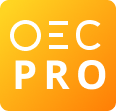Serbia-Belarus Trade: In 2023, Serbia exported $79M to Belarus. The main products that Serbia exported to Belarus were Nonaqueous Paints ($9.39M), Plastic Pipes ($7.37M), and Polyacetals ($6.47M). Over the past 5 years the exports of Serbia to Belarus have increased at an annualized rate of 4.64%, from $62.9M in 2018 to $79M in 2023.
In 2009, Serbia exported services to Belarus worth $972k, with Workers' remittances ($436k), Personal, cultural, and recreational services ($285k), and Compensation of employees ($244k) being the largest in terms of value.
Belarus-Serbia Trade: In 2023, Belarus exported $72.8M to Serbia. The main products that Belarus exported to Serbia were Sulfate Chemical Woodpulp ($24.5M), Yeast ($4.04M), and Acyclic Hydrocarbons ($3.68M). Over the past 5 years the exports of Belarus to Serbia have decreased at an annualized rate of 1.8%, from $79.8M in 2018 to $72.8M in 2023.
In 2014, Belarus exported services to Serbia worth $4.78M, with Computer and information services ($4.71M), Government services, n.i.e. ($60.4k), and Insurance services ($9.23k) being the largest in terms of value.
Comparison: In 2023, Serbia ranked 35 in the Economic Complexity Index (ECI 0.76), and 69 in total exports ($32.6B). That same year, Belarus ranked 33 in the Economic Complexity Index (ECI 0.81), and 114 in total exports ($7.61B).

